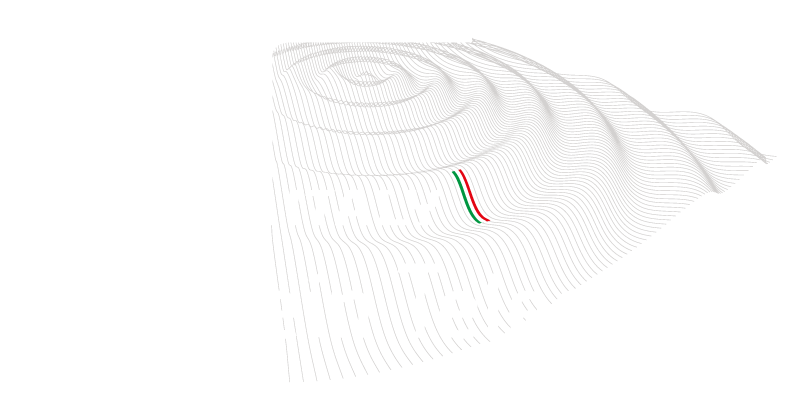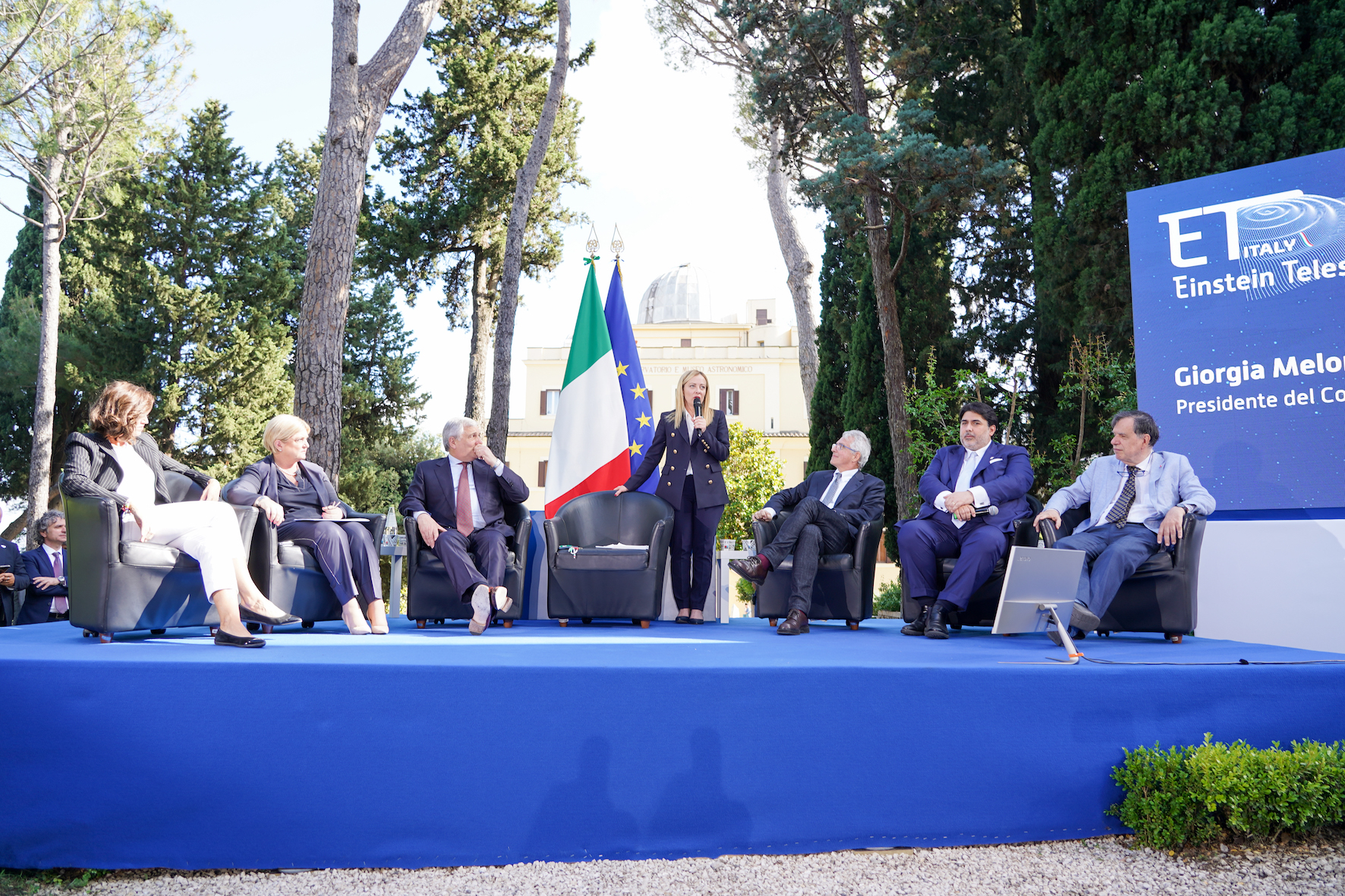Rome, 6 June 2023 – It will be able to observe a volume of the universe at least a thousand times larger than current research infrastructures. It will make it possible to study gravitational wave signals with great precision and to discover the history of the universe going back in time, almost all the way back to the Big Bang. Einstein Telescope is this and much more. Italy is a candidate to host the major international research infrastructure, in Sardinia, in the area of the disused mine of Sos Enattos (Nuoro).
The candidacy was officially announced by the Prime Minister, Giorgia Meloni, together with the Vice-President of the Council of Ministers and Minister of Foreign Affairs and International Cooperation, Antonio Tajani; the Minister of Universities and Research, Anna Maria Bernini; the Minister of Labour and Social Policies, Marina Elvira Calderone; and the President of the Autonomous Region of Sardinia, Christian Solinas.
At the headquarters of the National Institute for Astrophysics (INAF), formerly the Monte Mario Astronomical Observatory, which hosted the event, there were also speeches by Giorgio Parisi, Nobel Laureate in Physics and Chairman of the Technical Scientific Committee for the Italian candidature for the Einstein Telescope (ET), and Antonio Zoccoli, President of the National Institute for Nuclear Physics (INFN), the institute coordinating the national scientific team for the Italian candidature for ET.
Furthermore, the Undersecretary of State to the Presidency of the Council of Ministers, Alfredo Mantovano and Ettore Sequi, Ambassador and Head of the Italian delegation in the Board of Governmental Representatives of Einstein Telescope, were also present.
WHY THE ITALIAN CANDIDACY?
Thanks to over fifty years of experience in the study of gravitational waves, Italy is internationally recognised as one of the countries most scientifically prepared to run an extraordinary observatory such as ET.
The idea of ET is based on the successes of the Virgo (in Italy) and LIGO (in the United States) interferometers, which, thanks to the observations made starting from 2015 (the year gravitational waves were discovered) to the present day, have revolutionised the way the universe is studied, making this fundamental field of research one of the most promising.
In 2020, the project began to materialise when Italy, at the head of a group of other countries, submitted ET’s candidacy to the European Strategy Forum on Research Infrastructures (ESFRI), which recognised the project as one of the leading ones in Europe and also included it in its Roadmap 2021 of major research infrastructures in which it is relevant to invest. Italy, in support of its candidacy, can boast experience in the construction and management of large underground research infrastructures, such as the INFN Gran Sasso National Laboratories, the world’s largest underground laboratory dedicated to astroparticle physics. In addition, there is a large national scientific community with important multidisciplinary expertise backing and supporting the Italian candidacy.
WHY SARDINIA?
The area of the former Sos Enattos mine in Lula, in the province of Nuoro, Sardinia, has been chosen to host the Einstein Telescope. Sardinia is a region characterised by very low natural seismicity. Moreover, the Sos Enattos area is an area with very low population density and therefore very little disturbance from human activities. In order to perform high-precision measurements, it is essential that the Einstein Telescope is in an area immersed in ‘silence’. For Sardinia, being able to host this research infrastructure also means being able to count on spin-offs for employment and new business activities.
The event for the Italian candidacy

